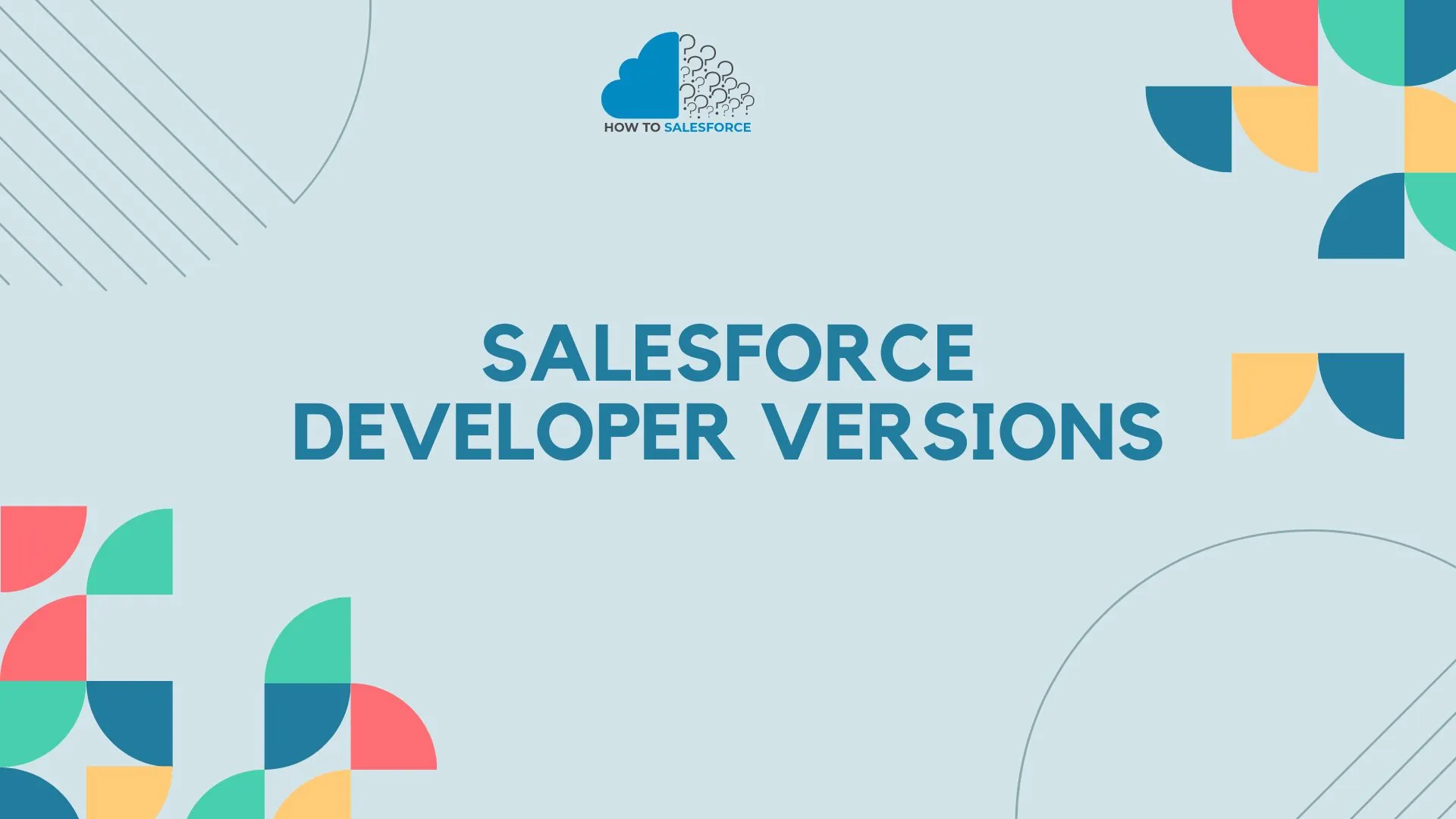Introduction
A Salesforce worker needs to be aware of all the different versions so that they can ensure everything works together and utilize the latest features. In this blog, the details of the Salesforce developer version are broken down, along with its value, perks, and the most up-to-date best practices.
Comprehending Versions of Salesforce Developer
What is a Developer Version of Salesforce?
The Salesforce developer version enables developers to build, modify, and administer apps. Salesforce continuously adds functionality, fixes faults, and enhances its platform. Upgrades are issued in spring, summer, and winter editions. With each upgrade, developers can utilize new features and tools to enhance their work.
- Salesforce publishes three major releases annually, named after the respective seasons (Spring, Summer, and Winter), followed by the year.
- Patch Releases: Between major releases, minor fixes and new features are added.
- Sandbox Preview: Salesforce provides a preview in the Sandbox environment for testing and feedback before each major release.
The Importance of Versions for Developers
For several reasons, it is crucial to use the correct Salesforce developer version.
- Every release adds new features that enhance application capabilities and streamline development processes.
- Maintain compatibility between development and production environments to avoid deployment issues.
- Security Enhancements: To safeguard data and apps, Salesforce regularly applies security patches to its platform.
- Performance Enhancements: Applications operate more smoothly when new versions incorporate performance enhancements.
How to Verify the Version of Salesforce
The version of Salesforce that developers are using is important. A number of methods can be used to confirm the version:
- Setup Menu: Open Salesforce, go to the “Setup” menu, and locate the “Company Information” section. This is where you’ll find the current Salesforce version.
- URL Inspection: The browser’s instance URL often contains the version information.
For a comprehensive list of all the improvements and additions included in each edition, examine the Salesforce Release Notes.
Important Features of Development Versions of Salesforce
Features Particular to a Version
Each Salesforce developer version introduces unique changes and features, including improved interfaces, expanded API options, and additional tools for development and automation.
- Spring Releases: These releases typically focus on introducing new features and improving existing ones.
- Summer Releases often focus on speed enhancements and user interface improvements.
- Winter Releases: Typically include major enhancements to integration and security features.
New Developer Tools
Salesforce introduces new features with each release that streamline development and increase productivity:
- Lightning Web Components (LWC): An efficient framework for creating responsive user interfaces.
- Einstein AI: Functionalities that incorporate artificial intelligence into apps, enabling programmers to create more intelligent and anticipatory tools.
- Apex Enhancements: Additional classes and methods that increase the power of Apex, the in-house programming language used by Salesforce.
API Improvements
API updates must be included in every new version of Salesforce because they give developers more ways to work with Salesforce data and connect it to other systems:
- REST API Improvements: These upgrades broaden the range of data accessible through the API and enhance its retrieval efficiency.
- GraphQL Support: Some versions include GraphQL, a more flexible and efficient query language.
- Bulk API 2.0: The Bulk API has been updated to handle massive volumes of data more reliably and quickly.
Suggested Methods for Using Salesforce Developer Editions
Remaining Current with Releases from Salesforce
To maximize the benefits of each Salesforce developer version, stay updated with new releases:
- Join the Salesforce Release Readiness Group: This community allows developers to discuss features and stay informed on upcoming releases.
- Review Release Notes: Salesforce publishes detailed release notes outlining all changes, new features, and deprecations in each version.
- Attend Salesforce Webinars: These sessions offer information on new features and practical implementation strategies.
Sandbox Environment Testing
We recommend testing updates and new features in a lab before implementing them in production.
- Utilize the Sandbox Preview: Salesforce provides developers with access to a Sandbox to test new versions before their production release.
- Run Automated Tests: To identify any compatibility issues early, make sure all automated tests are run against the latest version.
- User Acceptance Testing (UAT): Test new features with end users to ensure they meet business requirements and don’t interfere with existing processes.
Handling Version Control in the Development of Salesforce
It is essential to maintain a version control system that functions effectively across various Salesforce developer versions.
- Use Version Control Systems (VCS): Git and other similar tools facilitate the management of code changes across versions, facilitating the tracking of updates and the ability to roll back changes as needed.
- Document Changes: To aid with debugging and training, maintain thorough records of all modifications made to each version.
- Version Tagging: To maintain structure and clarity, tag releases in your version control system according to the Salesforce version for which they were created.
Issues and Fixes When Using Salesforce Developer Versions
Typical Difficulties
Using a different version of Salesforce developer may present several challenges.
- Compatibility Issues: Custom code created for earlier versions may not work with new features.
- Learning Curve: Each release requires developers to learn new skills and adapt to updated tools and features.
- Performance Optimization: Considerable testing and optimization may be necessary to guarantee that apps continue to function properly after updates.
Remedies and Countermeasures
To get around these problems, developers can do the following:
- Continuous Education and Certification: To stay abreast of new features and industry best practices, participate in continuing education and certification programs.
- Continuous Integration/Continuous Deployment (CI/CD): Implement pipelines for CI/CD to automate deployment and testing, ensuring that updates don’t interfere with current functionality.
- Community Engagement: Participate in groups and forums for Salesforce developers to exchange expertise and gain insight from others’ experiences with new releases.
Making Use of Salesforce Resources and Support
Salesforce offers extensive tools to help developers manage version changes.
- Salesforce Support: For direct assistance with version-related issues, contact Salesforce’s support staff.
- Trailhead: Trailhead, a free learning resource from Salesforce, offers projects and modules specifically designed to help users grasp and utilize new developer versions.
- Developer Documentation: Salesforce’s official documentation is frequently updated with each new release, providing a reliable resource for all modifications and added functionality.
Upcoming Patterns for Salesforce Developer Editions
Integration of Artificial Intelligence
One notable trend is the increasing use of artificial intelligence (AI) in the Salesforce developer version.
- Einstein AI: As its AI platform evolves, Salesforce provides developers with additional tools to incorporate machine learning and predictive analytics into their apps.
- Automated Code Suggestions: AI-powered solutions that expedite the development process by offering code optimizations and recommendations.
- AI-Powered Testing: Programs that forecast possible bugs in code and recommend remedies before release through the use of AI.
Improved Customization Functionality
Salesforce is always adding more ways to customize:
- Custom Metadata Types: New versions offer more options for creating and utilizing custom metadata, enhancing the adaptability and flexibility of applications to meet various business requirements.
- Dynamic Forms and Actions: Recent editions have included more dynamic forms and actions, providing a more tailored user experience.
- Mid-Level/No-Level Development: Salesforce is providing tools that lessen the requirement for in-depth coding skills, hence appealing to citizen developers.
More Integration Choices
Integration is still a vital component of developing Salesforce:
- API Improvements: Data flows and system integration are simplified by continuous improvements to Salesforce’s APIs.
- Middleware and Connectors: Updates introduce or enhance middleware solutions to facilitate more seamless connectivity with external applications.
- Cross-Cloud Integration: Salesforce is introducing tools to enhance cloud interoperability, enabling developers to design applications that seamlessly function across multiple Salesforce platforms.
Conclusion
Staying connected with the Salesforce developer version is essential for optimizing the platform and increasing productivity.
By understanding the significance of each version, following best practices, and preparing for future trends, developers can ensure they stay on the cutting edge of innovation and provide their organization with the best solutions. Keeping up with these developments will be essential to any developer’s career as Salesforce continues to change.


